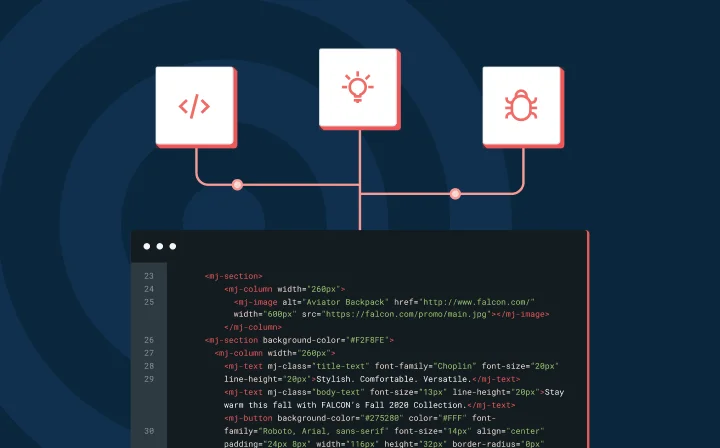Dev Life
HTTP/2 Cleartext (H2C) client example in Go

Dev Life

This blog post was written and self-published by one of our developers. You can also find it on Medium.
Since my internet foo failed me, and the only workable example of an H2C client I can find was in the actual go test suite, I’m going to lay out what I discovered about H2C support in golang here.
First, in case you may be wondering what H2C is, it is essentially HTTP/2 but without TLS. H2C is understandably not widely publicized as HTTP/2 with TLS is more secure and not open to some types of attacks. However, H2C isn’t without its use cases; for instance, GRPC uses H2C when you build a client with grpc.WithInsecure().
Second, is that the standard golang code supports HTTP2 but does not directly support H2C. H2C support only exists in the golang.org/x/net/http2/h2c package. You can make your HTTP server H2C capable by wrapping your handler or mux with h2c.NewHandler() like so.
h2s := &http2.Server{}
handler := http.HandlerFunc(func(w http.ResponseWriter, r *http.Request) {
fmt.Fprintf(w, "Hello, %v, http: %v", r.URL.Path, r.TLS == nil)
})
server := &http.Server{
Addr: "0.0.0.0:1010",
Handler: h2c.NewHandler(handler, h2s),
}
fmt.Printf("Listening [0.0.0.0:1010]... ")
checkErr(server.ListenAndServe(), "while listening")
The above code allows the server to support H2C upgrade and H2C prior knowledge along with standard HTTP/2 and HTTP/1.1 that golang natively supports.
If you don’t care about supporting HTTP/1.1, then you can run this code, which only supports H2C prior knowledge.
server := http2.Server{}
l, err := net.Listen("tcp", "0.0.0.0:1010")
checkErr(err, "while listening")
fmt.Printf("Listening [0.0.0.0:1010]... ")
for {
conn, err := l.Accept()
checkErr(err, "during accept")
server.ServeConn(conn, &http2.ServeConnOpts{
Handler: http.HandlerFunc(func(w http.ResponseWriter, r *http.Request) {
fmt.Fprintf(w, "Hello, %v, http: %v", r.URL.Path, r.TLS == nil)
}),
})
}
Once you have a running server, you can test your server by installing curl-OpenSSL and use curl to test your H2C enabled server.
$ brew install curl-openssl
# Add curl-openssl to the front of your PATH
$ export PATH="/usr/local/opt/curl-openssl/bin:$PATH"
$ curl -v --http2 http://localhost:1010
* Trying ::1:1010...
* TCP_NODELAY set
* Connected to localhost (::1) port 1010 (#0)
> GET / HTTP/1.1
> Host: localhost:1010
> User-Agent: curl/7.65.0
> Accept: */*
> Connection: Upgrade, HTTP2-Settings
> Upgrade: h2c
> HTTP2-Settings: AAMAAABkAARAAAAAAAIAAAAA
>
* Mark bundle as not supporting multiuse
< HTTP/1.1 101 Switching Protocols
< Connection: Upgrade
< Upgrade: h2c
* Received 101
* Using HTTP2, server supports multi-use
* Connection state changed (HTTP/2 confirmed)
* Copying HTTP/2 data in stream buffer to connection buffer after upgrade: len=0
* Connection state changed (MAX_CONCURRENT_STREAMS == 250)!
< HTTP/2 200
< content-type: text/plain; charset=utf-8
< content-length: 20
< date: Wed, 05 Jun 2019 19:01:40 GMT
<
Hello, /, http: true
curl -v --http2-prior-knowledge http://localhost:1010
* Trying ::1:1010...
* TCP_NODELAY set
* Connected to localhost (::1) port 1010 (#0)
* Using HTTP2, server supports multi-use
* Connection state changed (HTTP/2 confirmed)
* Copying HTTP/2 data in stream buffer to connection buffer after upgrade: len=0
* Using Stream ID: 1 (easy handle 0x7fdab8007000)
> GET / HTTP/2
> Host: localhost:1010
> User-Agent: curl/7.65.0
> Accept: */*
>
* Connection state changed (MAX_CONCURRENT_STREAMS == 250)!
< HTTP/2 200
< content-type: text/plain; charset=utf-8
< content-length: 20
< date: Wed, 05 Jun 2019 19:00:43 GMT
<
Hello, /, http: true
Now, Remember when I said that the golang standard library does not support H2C? While that is technically correct, there is a workaround to get the golang standard HTTP/2 client to connect to an H2C enabled server.
To do so, you have to override DialTLS and set the super-secret AllowHTTP flag.
client := http.Client{
Transport: &http2.Transport{
// So http2.Transport doesn't complain the URL scheme isn't 'https'
AllowHTTP: true,
// Pretend we are dialing a TLS endpoint.
// Note: we ignore the passed tls.Config
DialTLS: func(network, addr string, cfg *tls.Config) (net.Conn, error) {
return net.Dial(network, addr)
},
},
}
resp, _ := client.Get(url)
fmt.Printf("Client Proto: %d\n", resp.ProtoMajor)
Although this all looks a little wonky, it actually works really well and performs nicely in production environments.
A complete working example is available here http://github.com/thrawn01/h2c-golang-example.